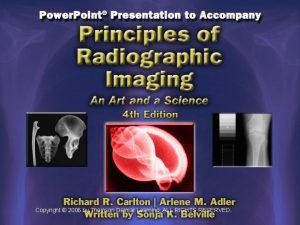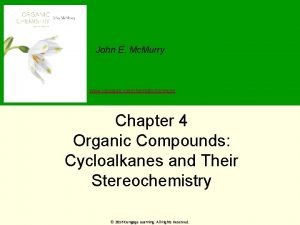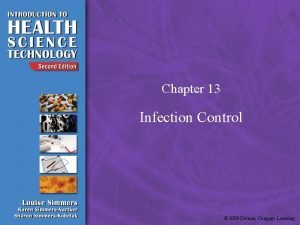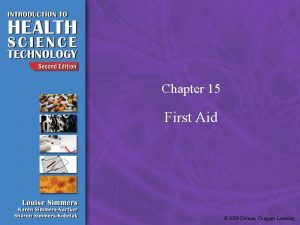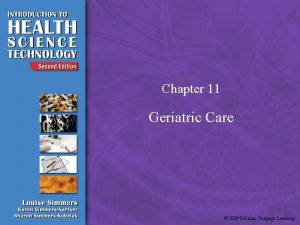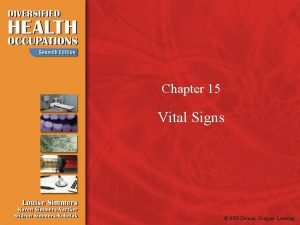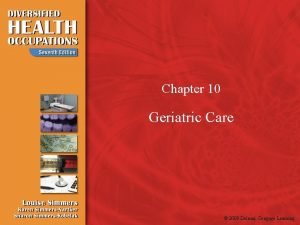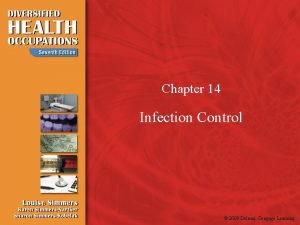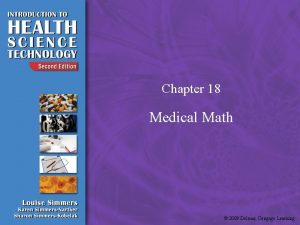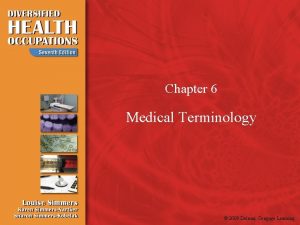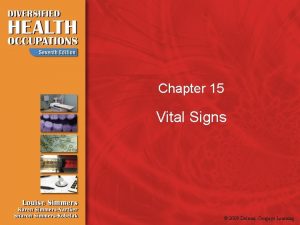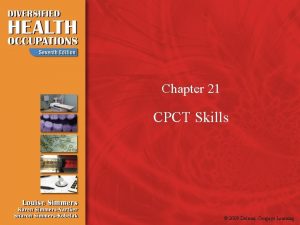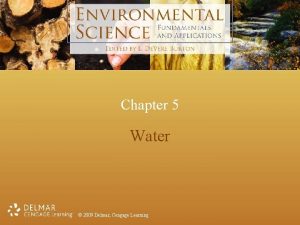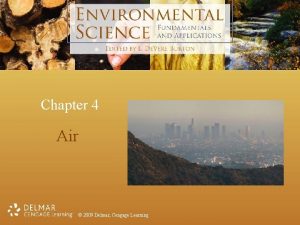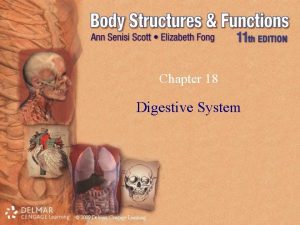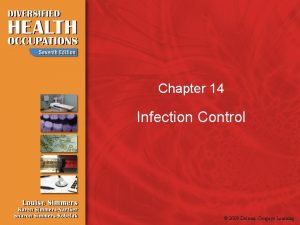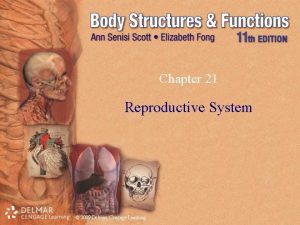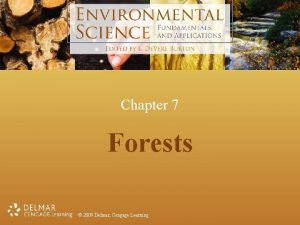Chapter 3 Ecosystem Management 2009 Delmar Cengage Learning

























- Slides: 25

Chapter 3 Ecosystem Management © 2009 Delmar, Cengage Learning

Humans and Their Environment • People have always lived in an environment – In the past, our impact was smaller • hand tools, smaller populations, etc. – With technology, our impact has increased © 2009 Delmar, Cengage Learning

Managing Natural Resources • Active role in caring for environment – Need to understand how environment works – Must gather information about environment health © 2009 Delmar, Cengage Learning

Managing Natural Resources • Environmental issues require their own solutions – Each issue is different – Each issue should be considered separately © 2009 Delmar, Cengage Learning

Natural Resources • Everything in environment is natural resource – Any object used to perform work – Any object with potential to perform work © 2009 Delmar, Cengage Learning

Natural Resources • Nonexhaustible resources – could last forever – continuously renewed – does not mean they are not limited • Human misuse can still damage resource • Examples – water and air © 2009 Delmar, Cengage Learning

Natural Resources • Renewable resources – Resource can be replaced by human efforts – Use should be restricted • used no faster than can be regenerated – Does not mean it will never be used up – Examples • forests, fish populations, wildlife populations © 2009 Delmar, Cengage Learning

Natural Resources • Nonrenewable or exhaustible resources – resources that cannot be replaced or reproduced – exist in finite amounts – do not renew themselves – We can learn to • conserve, use less, and recycle © 2009 Delmar, Cengage Learning

Natural Resources • Although a natural resource may be finite, it is not necessarily limited © 2009 Delmar, Cengage Learning

Nonrenewable and Exhaustible Resources • Examples – oil, lead, cobalt, zinc – even soil • constantly being formed • Why not a nonexhaustible resource? • Nature makes soil too slowly © 2009 Delmar, Cengage Learning

Nonrenewable and Exhaustible Resources • Nonrenewable also means renewed too slowly © 2009 Delmar, Cengage Learning

Balance of Nature • No such thing as balance of nature • Forces of nature constantly produce change: continuous and natural • It is essential that change be gradual • Managing resources wisely requires careful use – using resources slowly and gradually © 2009 Delmar, Cengage Learning

Carrying Capacity • Population – number of individuals in given area • Carrying capacity – population level an ecosystem can support • number of individuals that can get resources • Populations that exceed carrying capacity – experience disease, predation, starvation © 2009 Delmar, Cengage Learning

Human Population • Human population through the years – 6000 B. C. = approximately 10 million people – Birth of Christ = approximately 300 million – A. D. 1800 = almost 1 billion people – 1900 = 1. 6 billion – 1979 = 4. 3 billion – 1999 = 6 billion © 2009 Delmar, Cengage Learning

Human Population • What is the Earth’s carrying capacity? © 2009 Delmar, Cengage Learning

Conservation • Protecting natural resources against harm and waste • Involves – using less so resource available in future – not using resources wastefully or carelessly © 2009 Delmar, Cengage Learning

Conservation • Resources are not to be set aside – should be used – should be managed for future use, too © 2009 Delmar, Cengage Learning

Conservation • Soil necessary for – farms, human use – maintaining wildlife habitats – Soil erosion greatest source of water pollution © 2009 Delmar, Cengage Learning

Conservation • Soil conservation – protecting soil from wind and water – minimizing erosion – keeping soils fertile and productive © 2009 Delmar, Cengage Learning

Preservation • Maintaining resource in natural state – simply because we value it • We must balance our desires – for preservation with needs as a people © 2009 Delmar, Cengage Learning

Preservation • Questions for this generation: – Can we set aside certain resources? – Which is more important: • economic growth or preservation? © 2009 Delmar, Cengage Learning

Protecting Resources • Pollution – must find origin and reduce release – may even involve cleanup © 2009 Delmar, Cengage Learning

Protecting Resources • Water Pollution – mostly from untreated sewage and industrial waste – Clean Water Act of 1972 • did much to reduce water pollution © 2009 Delmar, Cengage Learning

Protecting Resources • Air pollution – acid rain • caused by weak acids forming in rain – smog • pollution reacts with UV radiation • forms cloud of polluted air © 2009 Delmar, Cengage Learning

Protecting Resources • Main sources of air pollution – exhaust – coal and petroleum combustion • Must reduce amount of exhaust and combustion products © 2009 Delmar, Cengage Learning
 Delmar cengage learning medical terminology
Delmar cengage learning medical terminology 2009 delmar cengage learning
2009 delmar cengage learning 2009 delmar cengage learning
2009 delmar cengage learning 2009 delmar cengage learning
2009 delmar cengage learning Chapter 6 the skeletal system answer key
Chapter 6 the skeletal system answer key Chapter 13 medical math
Chapter 13 medical math 2009 delmar cengage learning
2009 delmar cengage learning Delmar cengage learning instructor resources
Delmar cengage learning instructor resources Thomson delmar learning
Thomson delmar learning Chapter 7 cengage
Chapter 7 cengage Chapter 5 learning exercises medical terminology
Chapter 5 learning exercises medical terminology Cengage learning heart diagram
Cengage learning heart diagram South-western cengage learning
South-western cengage learning Cengage learning heart diagram
Cengage learning heart diagram Cengage learning australia
Cengage learning australia Whille
Whille Cengage learning
Cengage learning Wadsworth cengage learning
Wadsworth cengage learning Cengage learning
Cengage learning Cengage learning plant cell
Cengage learning plant cell Cengage learning
Cengage learning Cengage learning
Cengage learning Brooks cole cengage learning
Brooks cole cengage learning 2014 cengage learning accounting answers
2014 cengage learning accounting answers Cengage chapter 7
Cengage chapter 7 Cengage learning
Cengage learning








